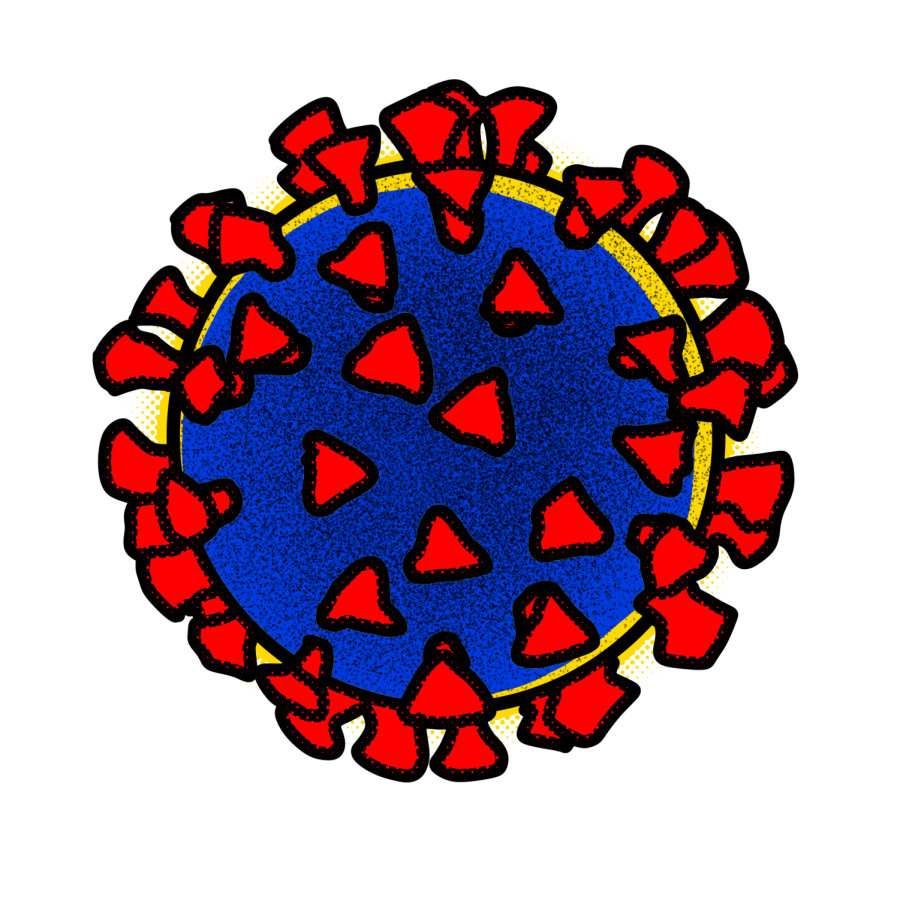Pharmaceutical companies strive to develop first COVID-19 vaccine
November 1, 2020
The global race for a COVID-19 vaccine is intensifying as several pharmaceutical companies run trials to develop an immunization that is both safe and effective.
The Food and Drug Administration (FDA) requires a comprehensive testing process before a vaccine can be administered to the public. The vaccine is first tested in animals, then in humans during Phase I. The doses of the vaccine are formulated in Phase II and eventually enter large-scale trials in Phase III. Though the process to make a COVID-19 vaccine is extensive, scientists are not starting completely from scratch.
“Past research in other types of coronaviruses has identified potential approaches, some of which have been used before to create vaccines,” The Fairfax County Health Department said.
The FDA is in charge of overseeing vaccine trials and carefully analyzing trial results. Highly-trained doctors and scientists from the FDA look over the efficacy of vaccines and make sure that safety is not compromised in the manufacturing and trial process. After the vaccine is in use, the FDA will also monitor side effects.
“Vaccines can cause side effects such as pain and redness at the injection site or less often, a low-grade fever,” the Fairfax County Health Department said. “These reactions usually go away within a few days on their own. More than half of those receiving early Covid-19 vaccines reported mild, short-term side effects such as fever, headaches, muscle aches, and injection-site reactions. As more people are enrolled in Phase III trials, the safety and efficacy profile of Covid-19 vaccines will be better understood.”
Of the 40 vaccines in human clinical trials and several in large-scale Phase III trials, the frontrunner in the vaccine race is Pfizer, an American biopharmaceutical company. Pfizer has begun manufacturing 700,000 vaccines in anticipation for its November regulatory approval. Though President Trump has been adamant that a vaccine would be approved before Election Day on Nov. 3, the CEO of Pfizer has publicly clarified that the company wouldn’t apply for approval from the FDA until the third week of November, at the earliest. Pfizer is working with German biopharmaceutical company BioNTech to create 100 million doses of the vaccine by the end of the year so that the company is prepared to send its vaccine around the globe.
Other American companies that are in Phase III trials include AstraZeneca, Moderna and Johnson and Johnson. But the U.S. is not the only country that is vying to create the first COVID-19 vaccine. Russian pharmaceutical company Gamaleya is the international standout vaccine developer at the moment. The company is currently testing its vaccine, Sputnik V, a nod to the famous Space Race between the U.S. and U.S.S.R. during the Cold War, on 40,000 volunteers. Gamaleya began its late-stage human vaccine trials in late September and will publish an interim report in November with data from 5,000 to 10,000 volunteers.
Though Russia insists that the trials are going smoothly, scientists from around the globe outspokenly criticize Gamaleya’s trials, saying the vaccine has yet to produce a robust immune response, and the data from the trials is incomplete. In early September, Gamaleya published its early-stage trial findings in the Lancet medical journal, but a group of scientists from London wrote an open letter to the Lancet saying the data patterns were “strange and unlikely” and therefore, “no conclusions can be definitively drawn on the reliability of the data presented”.
Besides bringing relief to the pandemic, pharmaceutical companies have another reason to create the first COVID-19 vaccine: massive economic incentive. Johnson and Johnson, along with AstraZeneca, have promised not to profit off of a COVID-19 vaccine. However, Pfizer has made no such promise. Pfizer also has not taken federal funding from the U.S. government, unlike other American companies. Therefore, it can control the vaccine price without government regulation. Gamaleya, like Pfizer, is driven by economic interests because the Russian company would have major leverage over its American competitors.
As international companies race against the clock to create a vaccine, the pandemic rages on with 46.3 million cases worldwide, with 9.18 million in the U.S.
“Because COVID-19 continues to kill thousands of people each week, it is important that a safe and effective vaccine be available quickly after a thorough review of the scientific data,” the Fairfax County Health Department said.
Pharmaceutical companies are using methods to expedite the vaccine trial process without compromising safety, such as running trials and manufacturing vaccines at the same time. The FDA also has an emergency provision called “Emergency Use Authorization” or EUA. This provision is a common tool for the FDA and other regulatory agencies to use in order to evaluate products in an emergency. Under EUA, no approval steps are skipped in order to ensure safety is not sacrificed for speedy administration.
“[EUA] weighs the known evidence of risks and benefits with the need to move expeditiously to save lives,” the Fairfax County Health Department said. “EUA will likely be the mechanism that FDA uses to approve a COVID-19 vaccine.”
When a vaccine is approved, federal, state and local governments will follow Centers for Disease Control and Prevention guidelines, which will identify the populations that are most vulnerable to COVID-19. In Fairfax County, officials are working to determine who will receive the vaccine first. As it becomes more widely available, the group of people allowed to receive the vaccination will increase. However until a vaccine is ready, it is crucial that people continue to social distance, wear masks, practice good hand washing and stay home if they are feeling sick or have been exposed to COVID-19.
“A vaccine to prevent Covid-19 is the best hope for ending the pandemic,” the Fairfax County Health Department said. “But until a Covid-19 vaccine is available and even beyond, infection prevention and community mitigation measures will continue to be critical.”



